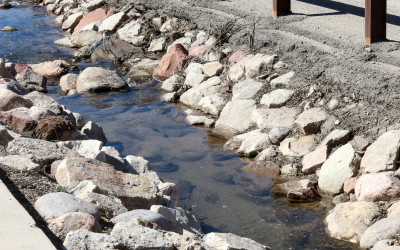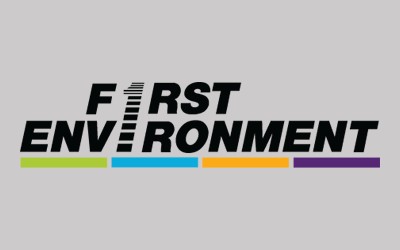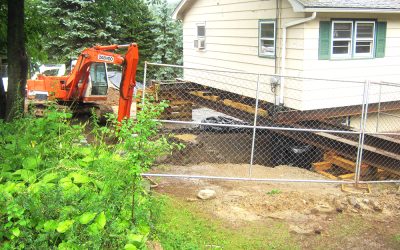The Role of Mitigation in Climate Litigation
Didn’t get to read our first Climate Change Litigation Blog? Check it out here. What Role Does Science and Engineering Play in Climate Change Litigation?
As law students learn in their first-year torts class, a prima facie negligence claim must satisfy four elements: duty, breach, causation, and injury. Much has been written on causation and injury related to climate change. To be sure, we will address these issues in future articles. This discussion, however, will focus on the technical aspects related to duty of care and its breach.
Under tort law, duty of care is defined as the responsibility of a person or business to act as a reasonable person would act in a similar situation. Plaintiff lawyers have argued that oil and gas companies as well as utilities could have reasonably mitigated greenhouse gas (GHG) emissions throughout their operations and by re-thinking their product. In general, mitigation is thought of as taking reasonable actions to reduce GHG emissions or to enhance GHG removals. Some reasonable mitigation actions that have been available for some time include the following:
- Improving basic operational efficiency
- Developing alternative biofuels
- Investing in alternative energy sources (e.g., wind, solar, biomass)
- Fostering fuel efficiency standards rather than fighting them
- Investing in electric vehicles (EVs) and battery storage technologies
Adding to this argument is the fact that the costs of implementing these actions have been declining while the investment return has increased. This suggests that the burden of mitigating the harm posed by climate change has decreased over time. According to legal scholars, this trend makes the imposition of liability even more likely. The counter argument, however, is that oil and gas companies have been taking some of these actions over the last 30 years, thus meeting their duty of care.
The technical question becomes: “Did these efforts make a meaningful difference in mitigating fossil fuels’ contribution to the hazard of climate change?”
The first step in answering this question is to establish a credible climate impact metric. A metric that has been used for decades is GHG emissions. Because different GHGs have different global warming potentials, total emissions are normalized to metric tonnes of CO2 equivalent. CO2 is used because it is the most common of all GHGs.
The second step is to establish a base year and related GHG emissions to use as a credible benchmark to track future impacts. There are internationally accepted technical standards – such as the GHG Protocol Corporate Accounting and Reporting Standard as well as ISO 14064, Part 1 – that establish specific methods and requirements. Unfortunately, most oil and gas companies have only published limited GHG disclosures required by the government. It seems reasonable oil and gas companies had a duty to publish detailed GHG emission reports upon discovering the hazards of accelerated climate change.
The third step is to verify the estimated GHG baseline and subsequent reductions since specific mitigation efforts were implemented. Ideally, assertions of GHG reductions or avoidance would be verified by an independent third-party. Here again, there are established global standards such as ISO 14064, Part 3 for verification of past GHG assertions and validation of forward-looking metrics of potential climate impact. These reviews are like having financial reports audited by a certified accounting firm. GHG reports are audited by an accredited GHG verification/validation body. Failure to conform to this type of standard practice could be argued as a breach of a company’s duty of care to provide reliable climate-related information to regulators, shareholders, lenders, insurance companies, and the public.
Assuming we have credible mitigation information, the last step is to assess the impact of past (and perhaps expected) mitigation actions that “move the needle” toward meeting climate goals, such as the Paris Agreement’s aim of limiting global warming to between 1.5 and 2 degrees Celsius. The Task Force on Climate-related Financial Disclosures (TCFD) recently published a consultation on forward-looking climate metrics. These metrics are designed to use available information to estimate a given emitter’s contribution to future climate impacts.
One forward-looking metric that has garnered a lot of interest is Implied Temperature Rise. This metric predicts the impact of an individual company or portfolio of companies’ actions on the Paris Agreement’s climate goals. This allows expert witnesses to develop environmental engineering estimates on how effective past, current, and even future mitigation actions contribute – positively or negatively – to climate goals. There is, however, disagreement over which methodology should be used to calculate Implied Temperature Rise. Given this variability, it is reasonable to use multiple methodologies and present an average or trend.
We believe technically addressing whether oil and gas companies fulfilled their duty of care to mitigate climate change will be critical to future litigation.
Download the full blog for citations and additional information.
About First Environment
First Environment is a full-service environmental consulting firm that provides climate change consulting and expert services to clients worldwide, including GHG reporting and verification/validation, mitigation and adaptation planning, risk management, resilience design and implementation, and global standards conformance development and auditing.

Phil is a senior level business director experienced in climate change and carbon consulting services, including the development of greenhouse gas emission reports, assessment of carbon accounting systems/controls, emission baseline reductions, verification of carbon inventories and offsets, and environmental financing approaches such as green bonds. He has a proven track record of climate program development with a successful history of directing technical and financial aspects of multi-million dollar projects. Notably, Phil helped manage a $25 million strategic investment fund for American Reinsurance (now part of Munich American Reinsurance) focused on strategic environmental, health, and social loss prevention as well as cost control. In addition, he has signed off as lead greenhouse gas verifier on nearly six megatons in carbon emissions reductions under the U.S. EPA Climate Leaders program to ISO 14064-3 standards. He has also verified more than 100 facility inventories and reduction projects throughout U.S. and Canada to ISO 14064 standards, totaling more than 10 megatons of CO2e emissions. With regard to environmental financing, Phil co-developed environmental, social, and governance due diligence work stream frameworks for some of the largest pension funds in North America. Notably, he was also the first Certified Responsible Investment Professional in North America certified via the Responsible Investment Association and recognized by Investment Industry Association of Canada. Phil also sits on the Climate Bond Standards verification work group and has co-authored thought leadership on the area of Green Bonds.






